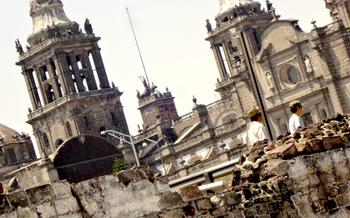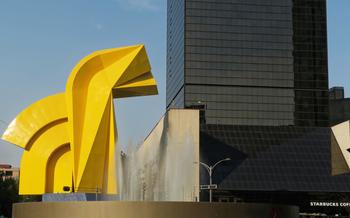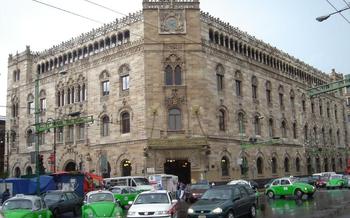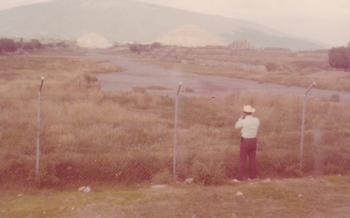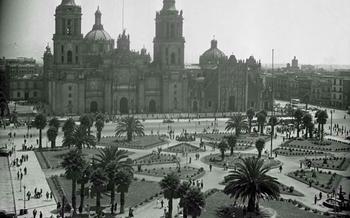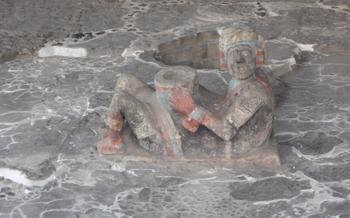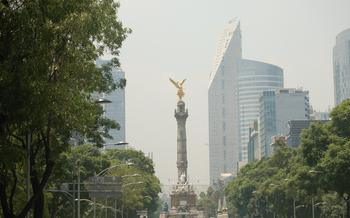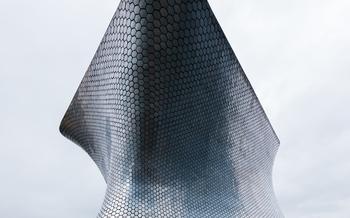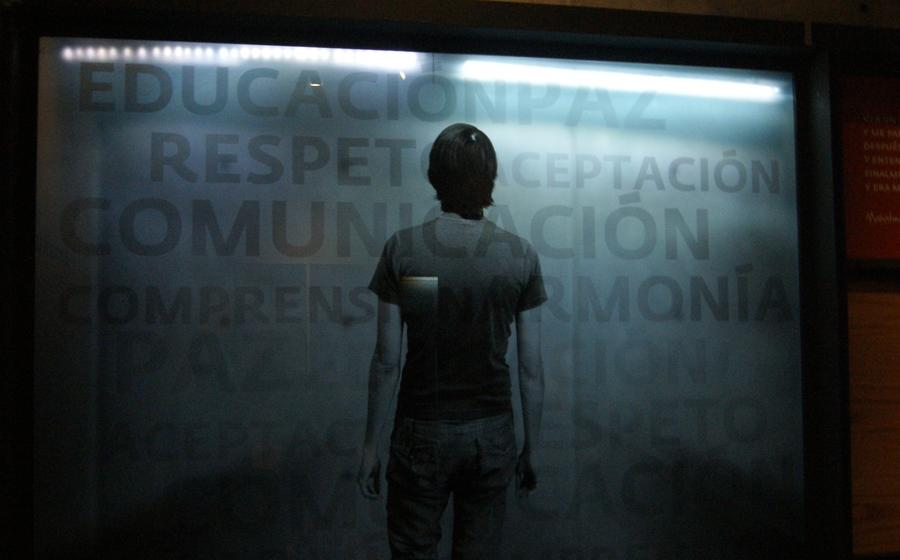
Museo Memoria y Tolerancia
- Museo Memoria y Tolerancia: Symbol of Remembrance and Advocacy
- Thematic Exhibitions: Exploring Intolerance and Perseverance
- Honoring the Victims of Intolerance: Holocaust Remembrance
- Promoting Tolerance and Mutual Respect: Educational Initiatives
- Guiding Visitors Through History: Expert Staff and Tours
- Multimedia Presentations: Bringing History to Life
- Interactive Displays: Engaging Visitors of All Ages
- Children's Area: Nurturing Tolerance from a Young Age
- Silence Room: Contemplating the Past and Reflecting on the Future
- Bookstore and Gift Shop: Spreading the Message Beyond the Museum
- Accessibility: Creating an Inclusive Environment
- Location: A Cultural Hub in Mexico City's Historic Center
- Plan Your Visit: Tips for a Meaningful Experience
- Insider Tip: Discover Hidden Gems in the Area
Museo Memoria y Tolerancia: Symbol of Remembrance and Advocacy
In stands as a testament to the resilience of the human spirit and the devastating consequences of intolerance. Founded in 2010, this thought-provoking museum delves into the dark chapters of history, shedding light on genocides, human rights abuses, and the profound impact of intolerance on individuals and society.
The museum's mission is threefold: to educate visitors about the history of intolerance and its devastating effects, to promote tolerance and mutual respect among individuals and communities, and to honor the victims of intolerance, particularly those who suffered during the Holocaust and other genocides.
The Museo Memoria y Tolerancia has gained global recognition for its powerful message and its commitment to promoting human rights and understanding. It has collaborated with prestigious institutions worldwide, including the United Nations, the International Holocaust Remembrance Alliance, and the Anne Frank House.
Thematic Exhibitions: Exploring Intolerance and Perseverance
The Museo Memoria y Tolerancia presents two powerful permanent exhibitions and a variety of temporary exhibitions that delving into various aspects of intolerance and resilience. The permanent exhibits, "Genocide Crimes in the 20th Century" and "Tolerance: What is it?", provide a comprehensive overview of the history of intolerance and the importance of tolerance in building a more just and equitable world.
The "Genocide Crimes in the 20th Century" exhibition chronologically explores the major genocides of the 20th century, including the Holocaust, the Armenian Genocide, and the Rwandan Genocide. Through artifacts, testimonies, and historical documents, the exhibition sheds light on the mechanisms of genocide and the devastating consequences of intolerance.
In contrast, the "Tolerance: What is it?" exhibition delves into the concept of tolerance, examining its historical evolution, its different manifestations, and its role in promoting peaceful coexistence. Interactive displays, multimedia presentations, and personal testimonies offer visitors a deeper understanding of the importance of tolerance and the challenges of practicing it in a diverse and interconnected world.
Temporary exhibitions at the Museo Memoria y Tolerancia focus on a wide range of topics related to intolerance and resilience, such as discrimination, racism, xenophobia, and human rights abuses. These exhibitions often feature the work of contemporary artists, activists, and scholars, providing fresh perspectives on these complex issues. The museum also hosts regular events, workshops, and conferences to foster dialogue and promote understanding among visitors.
Honoring the Victims of Intolerance: Holocaust Remembrance
Amidst the museum's poignant displays, a dedicated section stands as a solemn tribute to the victims of the Holocaust. This powerful exhibit showcases a collection of artifacts, personal testimonies, and historical documents that illuminate the horrors of this dark chapter in human history. Interactive displays offer visitors an intimate glimpse into the experiences of Holocaust survivors, shedding light on their resilience and the profound impact of intolerance and prejudice. Through these immersive presentations, the Museo Memoria y Tolerancia honors the memory of those who suffered and lost their lives during this tragic event, ensuring that their stories are never forgotten.
Promoting Tolerance and Mutual Respect: Educational Initiatives
Beyond its exhibitions, the Museo Memoria y Tolerancia is dedicated to fostering tolerance and mutual respect through a range of educational initiatives. These programs aim to raise awareness about the dangers of intolerance and promote empathy, dialogue, and understanding among people of all backgrounds.
-
Educational programs and workshops are offered for students of all ages, tailored to their specific needs and interests. Through interactive workshops, seminars, and conferences, students explore concepts such as tolerance, diversity, and human rights, developing critical thinking skills and a deep understanding of these important issues.
-
Outreach programs extend the museum's reach beyond its walls, engaging with different communities and promoting dialogue and understanding. The museum collaborates with schools, community organizations, and cultural institutions to host events, workshops, and exhibitions that foster tolerance and mutual respect within society.
Guiding Visitors Through History: Expert Staff and Tours
The Museo Memoria y Tolerancia boasts a team of knowledgeable and passionate museum staff who are dedicated to providing visitors with an immersive and educational experience. Guided tours are available in various languages, ensuring that visitors from all over the world can fully understand the museum's exhibitions and their significance. These tours are tailored to different age groups and interests, catering to the diverse needs of visitors. Whether you are a history buff, a student, or simply someone who wants to learn more about the importance of tolerance and human rights, the expert staff at the Museo Memoria y Tolerancia will guide you through the museum's powerful narratives, ensuring that you leave with a deeper understanding of the past and a renewed commitment to building a more tolerant and inclusive world.
Multimedia Presentations: Bringing History to Life
The Museo Memoria y Tolerancia employs multimedia presentations to complement and enhance the impact of its exhibitions. Through short films, documentaries, and interactive displays, visitors can immerse themselves in powerful narratives and historical footage. Personal testimonies from survivors and witnesses bring history to life, evoking emotions and fostering a deeper understanding of the human experiences behind the events explored in the museum. Animations and visual representations further illustrate complex concepts and historical contexts, creating a multisensory experience that captivates visitors of all ages. These multimedia elements serve as a powerful tool to convey the museum's message, making history relatable and leaving a lasting impression on its visitors.
Interactive Displays: Engaging Visitors of All Ages
Beyond traditional exhibits, the Museo Memoria y Tolerancia captivates visitors with its interactive displays. Touchscreens, multimedia kiosks, and hands-on activities transform history into a tangible and engaging experience. Visitors can explore interactive exhibits that encourage critical thinking, empathy, and understanding. These interactive elements make history relatable and accessible to visitors of all ages, leaving a lasting impression on their minds.
Children's Area: Nurturing Tolerance from a Young Age
The Museo Memoria y Tolerancia recognizes the importance of instilling the values of tolerance and understanding in young minds. To this end, it features a dedicated children's area designed to make learning about these crucial issues engaging and enjoyable for visitors of all ages.
The children's area is a vibrant and interactive space filled with games, puzzles, and activities that encourage critical thinking, empathy, and understanding. Storytelling sessions, workshops, and educational programs are also organized regularly to help children learn about tolerance, diversity, and human rights in a fun and accessible way.
By fostering empathy, compassion, and understanding from an early age, the Museo Memoria y Tolerancia aims to create a new generation of global citizens who are committed to promoting tolerance and preventing intolerance and discrimination in all its forms.
Silence Room: Contemplating the Past and Reflecting on the Future
After absorbing the powerful narratives and exhibits at the Museo Memoria y Tolerancia, visitors may seek a moment of quiet contemplation to process their emotions and reflect on the lessons learned. The museum provides a dedicated Silence Room, a sanctuary for introspection and self-reflection.
In this serene space, visitors can pause, sit in silence, and contemplate the experiences they have encountered within the museum's walls. It is a place to reflect on the stories of victims, survivors, and perpetrators of intolerance, and to consider the broader implications of these events for society as a whole.
The Silence Room encourages visitors to look inward and examine their own biases, prejudices, and misconceptions. It invites them to consider how they can contribute to a more tolerant and inclusive world. The room's contemplative atmosphere fosters a sense of empathy and understanding, promoting a deeper appreciation for the importance of tolerance, diversity, and human rights.
Whether seeking solace, inspiration, or simply a moment of quiet reflection, the Silence Room offers visitors a valuable opportunity to contemplate the past and consider the future. It is a space for personal growth, self-awareness, and a renewed commitment to building a more just and compassionate world.
Bookstore and Gift Shop: Spreading the Message Beyond the Museum
The Museo Memoria y Tolerancia extends its educational mission beyond its walls through its well-stocked bookstore and gift shop. Visitors can delve deeper into the museum's themes by purchasing books, DVDs, and educational materials that explore the history of intolerance and promote the values of tolerance and human rights.
Unique souvenirs and gifts inspired by the museum's exhibitions offer visitors a tangible reminder of their visit and the lessons they learned. By purchasing items from the bookstore and gift shop, visitors not only support the museum's educational initiatives but also become ambassadors for tolerance, spreading the museum's message far and wide.
Accessibility: Creating an Inclusive Environment
The Museo Memoria y Tolerancia is committed to creating an inclusive and accessible environment for all visitors. The museum features wheelchair accessibility throughout, ensuring that visitors with mobility challenges can easily navigate the exhibitions. Ramps and elevators provide access to all levels of the museum, allowing everyone to fully explore the exhibits.
In addition, the museum provides Braille signage and audio guides for visitors with visual impairments. These resources enable visitors to engage with the exhibitions and learn about the history of intolerance and the importance of tolerance. By providing these accessibility features, the museum ensures that everyone can have a meaningful and educational experience.
The museum's commitment to accessibility extends beyond physical barriers. The museum's staff is trained to be welcoming and accommodating to all visitors, regardless of their abilities or needs. The museum also offers educational programs and workshops that are designed to be inclusive and accessible to all participants.
By creating an inclusive environment, the Museo Memoria y Tolerancia ensures that everyone can learn about the importance of tolerance and understanding. The museum's accessibility features and welcoming atmosphere make it a valuable resource for people of all abilities.
Location: A Cultural Hub in Mexico City's Historic Center
The Museo Memoria y Tolerancia is strategically located in the heart of Mexico City's historic center, a vibrant neighborhood teeming with cultural attractions, museums, and historical sites. This prime location invites visitors to delve deeper into the city's rich cultural heritage by exploring the surrounding area.
Within walking distance of the museum, you'll find the Templo Mayor Museum, an archaeological site showcasing the ruins of the ancient Aztec city of Tenochtitlan. The Zócalo, Mexico City's main square, is another must-see, where you can witness the grandeur of the Metropolitan Cathedral and the National Palace.
For a leisurely stroll, head to the Paseo de la Reforma, a grand boulevard lined with iconic landmarks, including the Angel of Independence, a symbol of Mexican independence. Along this majestic avenue, you'll also find numerous museums, art galleries, and restaurants, offering a diverse cultural experience.
By exploring the surrounding area, you'll gain a deeper appreciation for Mexico City's rich history and vibrant cultural scene, making your visit to the Museo Memoria y Tolerancia even more meaningful.
Plan Your Visit: Tips for a Meaningful Experience
To make the most of your visit to the Museo Memoria y Tolerancia, it's advisable to plan ahead. Advance booking is highly recommended, particularly during the peak tourist season, to avoid disappointment and secure your spot. Once inside, set aside at least two to three hours to thoroughly explore the museum's thought-provoking exhibitions and delve into the profound stories they tell.
Guided tours are available in various languages, providing an enriching experience and enhancing your understanding of the exhibits. These tours offer insightful commentary and historical context, allowing you to grasp the significance of the museum's message more fully. Whether you choose to explore independently or join a guided tour, the Museo Memoria y Tolerancia promises a profound and transformative journey through history, tolerance, and human rights.
Insider Tip: Discover Hidden Gems in the Area
After immersing yourself in the powerful narratives of the Museo Memoria y Tolerancia, take some time to explore the surrounding area, which is brimming with historical and cultural treasures. Just a few steps away, you'll find the Templo Mayor Museum, showcasing the fascinating history of the ancient Aztec civilization. Continue your journey to the Zócalo, the heart of Mexico City, where you can marvel at the grandeur of the Metropolitan Cathedral and the National Palace.
For a refreshing break, stroll along the iconic Paseo de la Reforma, admiring the majestic Angel of Independence, a symbol of Mexico's fight for freedom. This vibrant boulevard is lined with beautiful parks, elegant buildings, and cultural landmarks.
And to fully immerse yourself in the local culture, indulge in a delicious meal at one of the many nearby restaurants, savoring the flavors of traditional Mexican cuisine. From mouthwatering tacos to hearty enchiladas, there's something to satisfy every palate.
So, after your thought-provoking visit to the Museo Memoria y Tolerancia, take the opportunity to explore the surrounding area and discover the rich cultural heritage and vibrant spirit of Mexico City.
